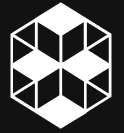What is Oriented Strand Board?
The Oriented Strand Board (OSB) is engineered wood. It is formed by adding adhesives to wood flakes. Then it’s compressed in a specific orientation under high pressure and temperature. The glued flakes form a wooden board that is much stronger. OSB is also known as aspenite or sterling boards. It looks almost similar to particle boards. The OSB should be your choice when looking for a cheaper alternative rather than plywood and timber.

Composition
OSB is made by breaking down wood into small chips. Then they are oriented in a specific way and mixed with a lot of adhesive and resin. Then they are pressed into specific shapes. The chips are organized into many layers. It depends on the intended thickness of the final product.
Moreover, these chips are also layered perpendicularly to create a so-called cross-grain pattern with excellent shear strength. Generally speaking, the composition of OSB is roughly 95% wood chips and 5% resin and adhesives.

Technical Information
OSB is produced in thicknesses ranging from ¼ inch to 2½ inches. The most commonly used thicknesses are ⅜, ½, and ⅝ inch. Larger panels (commonly 8×24 feet) are subsequently cut to 4×8 feet panels for retail. OSB panels may be square-edged or tongue-and-grooved to aid in connecting adjacent panels on site. OSB has particularly good nail-holding properties and can be glued with regular wood adhesives.

Use of Oriented Strand Board
Some of the most popular oriented strand boards uses are walling, sheathing, flooring, and roofing. The standardized panels have great stiffness, strength, and stability. They are often used as wall cladding attached to the steel frame or as partitions. Also, they have good soundproofing capabilities since the panels are uniform and have no internal gaps or voids. It is also worth mentioning that OSB can be fully recycled. Hence there are considered eco-friendly.






